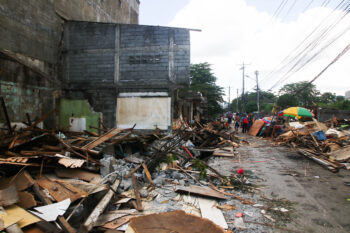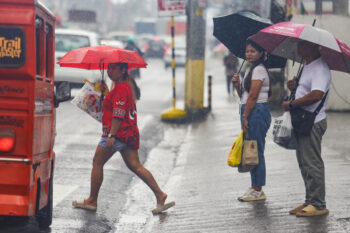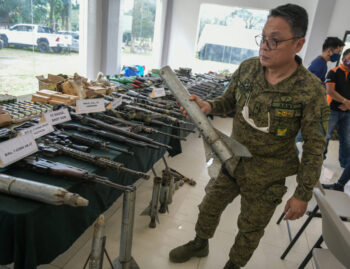
NAAWAN, Misamis Oriental (MindaNews / 15 February) – El Niño is here.
Eight provinces are now experiencing drought due to the effects of the El Niño phenomenon in the country, says the National Disaster Risk Reduction and Management Council (NDRRMC) recently.
These areas are the provinces of Apayao, Bataan, Cagayan, Cavite, Ilocos Norte, Kalinga, Palawan, and Zambales.
We have drought when there is long period of dry spell, that is, when the rainfall drops to 21% to 60% below normal for five consecutive months.
The Philippine Atmospheric, Geophysical, and Astronomical Services Administration (PAGASA) reported that only 41 provinces are currently hit by El Niño, down from its earlier projection of 50.
Accordingly, except for the Zamboanga peninsula, the rest of Mindanao will be spared from dry spell.
The El Niño phenomenon results from the warming of a large swathe of ocean surface in equatorial Pacific Ocean and its eastern side.
The natural phenomenon usually occurs every two to seven years, more frequently than its opposing climate phenomenon, La Niña, which occurs during the cool period in the temperature fluctuation of the ocean. But neither follows a schedule. El Niño dry spell typically lasts nine to 12 months, but can sometimes carry on for years, leaving in its wake drought and wildfires.
In as much as El Niño is a recurring phenomenon that constantly threatens our food security, government agencies like the Department of Agriculture (DA), National Irrigation Administration (NIA), Department of Environment and Natural Resources (DENR), Department of Public Works and Highways (DPWD), and the Department of Social Welfare and Development (DSWD) ought to put their acts together and come up with an integrated national plan and strategies to address the phenomenon and mitigate its adverse consequences.
Often, wet months precede the El Niño long dry spell. It is advisable to harvest and store rainwater in tanks and water cisterns where possible. Water impoundments may be constructed in strategic places where waters from rivers may be diverted to it especially during floods, making the impoundments as artificial lakes, which becomes a source of water for nearby farms. Moreover, the lakes may also be stocked with fish for sports fishing and some other activities may be conceived to develop said lakes into local tourist destinations. Surrounding areas may also be planted with trees to capture and store rainwaters, which, over time, may yet transform the impoundments into natural lakes.
Meanwhile, intensive research may be undertaken to develop more drought resilient rice and other crops.
Farmers may be advised to diversify during the dry period to the planting of crops that require minimal supervision and water. These may include sweet potatoes, cassava, purple yam (ube), taro (gabe), peanuts, eggplants, tomatoes, and onions.
Being proactive is the best way to overcome adversities.
(MindaViews is the opinion section of MindaNews. William R. Adan, Ph.D., is retired professor and former chancellor of Mindanao State University at Naawan, Misamis Oriental.)







